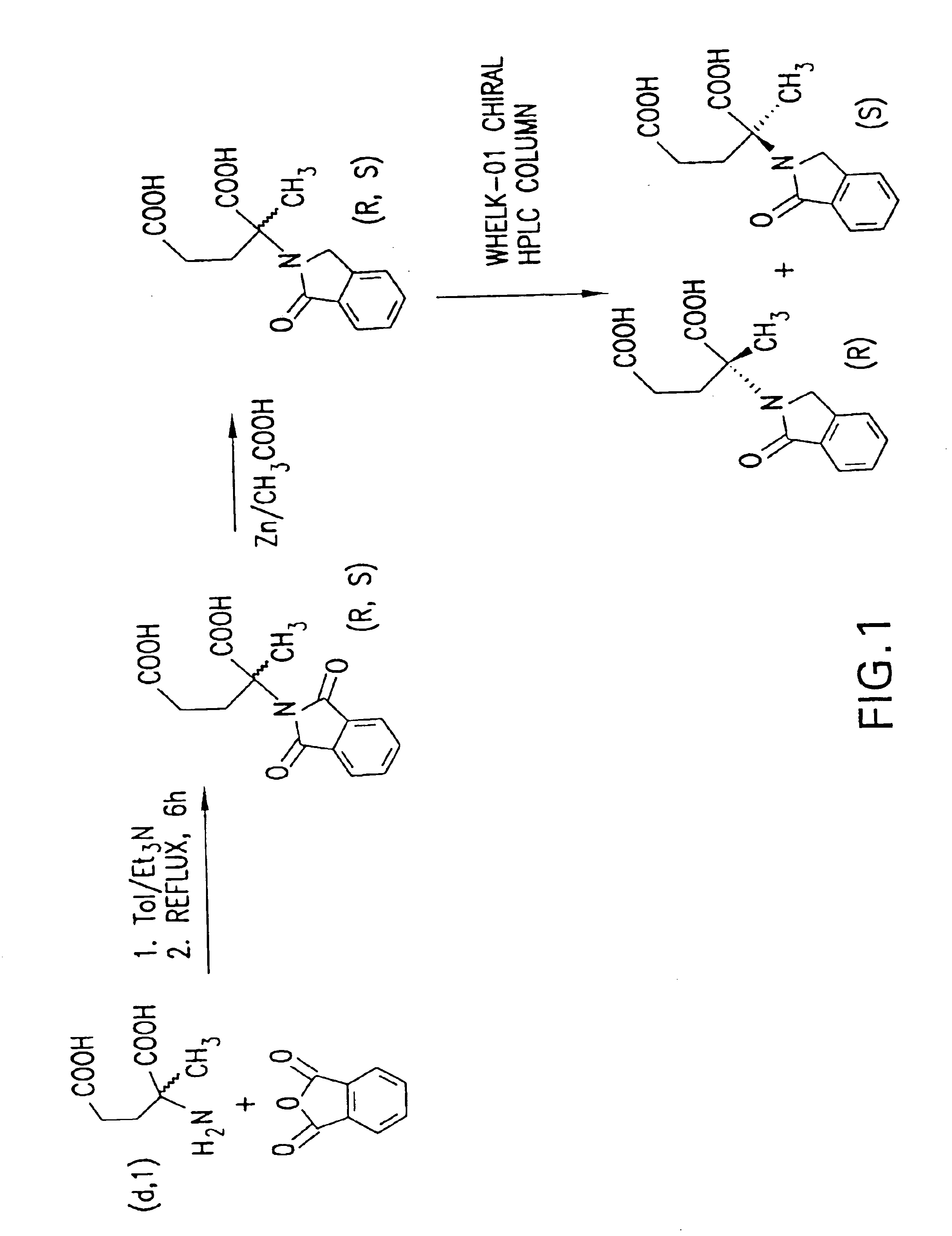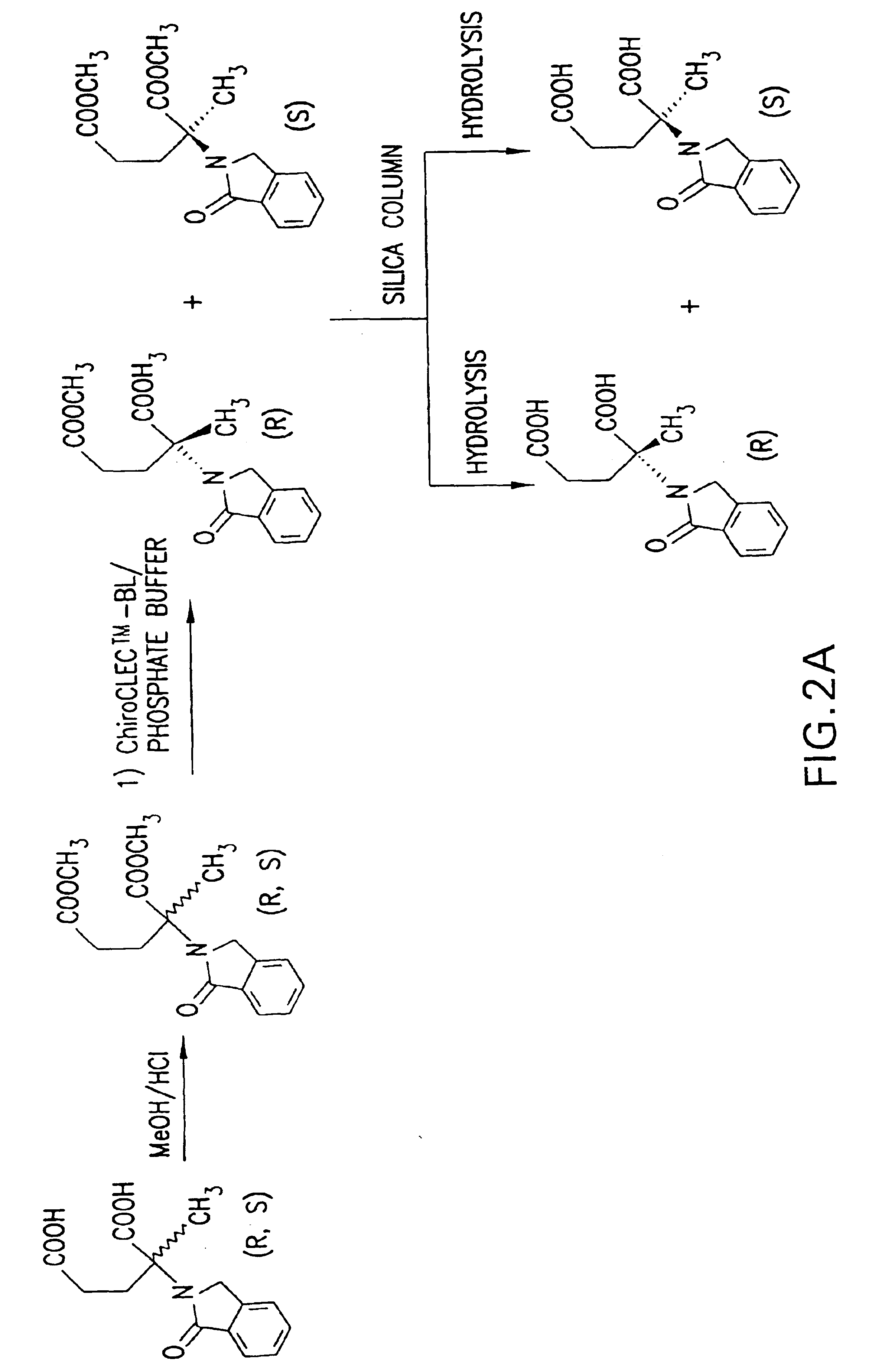Methods of treating undesired angiogenesis with 2-methyl-EM-138
a technology of 2-methyl-em-138 and angiogenesis, which is applied in the direction of biocide, heterocyclic compound active ingredients, organic chemistry, etc., can solve the problems of slow and linear growth rate of tumor implants, rapid and nearly exponential growth rate, and slow and linear growth ra
- Summary
- Abstract
- Description
- Claims
- Application Information
AI Technical Summary
Benefits of technology
Problems solved by technology
Method used
Image
Examples
example 1
Inhibition of Metastasis through Intraperitoneal Administration of EM-138
[0105]B16-BL6 melanoma cells (5×104) were injected intravenously into the tail veins of C57B1 / 6 mice. Three days later, the mice were treated intraperitoneally with increasing doses of thalidomide or 2-phthalimidinoglutaric acid (EM-138) on alternate days. Fourteen days after tumor cell inoculation, the lungs were removed from the mice and the surface pulmonary metastases were counted. The results of this experiment are shown in FIG. 4. The values shown are the mean of 5 mice per group. The bars on the graph represent the standard deviation.
example 2
Inhibition of Metastasis through Oral Administration of EM-138
[0106]B16-BL6 melanoma cells (5×104) were injected intravenously into the tail veins of C57B1 / 6 mice. Three days later, the mice were treated orally with increasing doses of thalidomide or 2-phthalimidinoglutaric acid (EM-138) on alternate days. Fourteen days after tumor cell inoculation, the lungs were removed from the mice and the surface pulmonary metastases were counted. The results of this experiment are shown in FIG. 5. The values shown are the mean of 5 mice per group. The bars on the graph represent the standard deviation.
example 3
Effect of the Number of Treatments on EM-138 Activity
[0107]B16-BL6 melanoma cells (5×104) were injected intravenously into the tail veins of C57B1 / 6 mice. Three days later, the mice received a gavage treatment with 0.8 mmol / kg of 2-phthalimidinoglutaric acid (EM-138). The mice received either a single treatment, five treatments on alternate days, or one treatment every day for eleven days. Fourteen days after tumor cell inoculation, the lungs were removed from the mice and the surface pulmonary metastases were counted. The results of this experiment are shown in FIG. 6. The values shown are the mean of 5 mice per group. The bars on the graph represent the standard deviation.
PUM
| Property | Measurement | Unit |
|---|---|---|
| volume | aaaaa | aaaaa |
| diameter | aaaaa | aaaaa |
| size | aaaaa | aaaaa |
Abstract
Description
Claims
Application Information
 Login to View More
Login to View More - R&D
- Intellectual Property
- Life Sciences
- Materials
- Tech Scout
- Unparalleled Data Quality
- Higher Quality Content
- 60% Fewer Hallucinations
Browse by: Latest US Patents, China's latest patents, Technical Efficacy Thesaurus, Application Domain, Technology Topic, Popular Technical Reports.
© 2025 PatSnap. All rights reserved.Legal|Privacy policy|Modern Slavery Act Transparency Statement|Sitemap|About US| Contact US: help@patsnap.com



